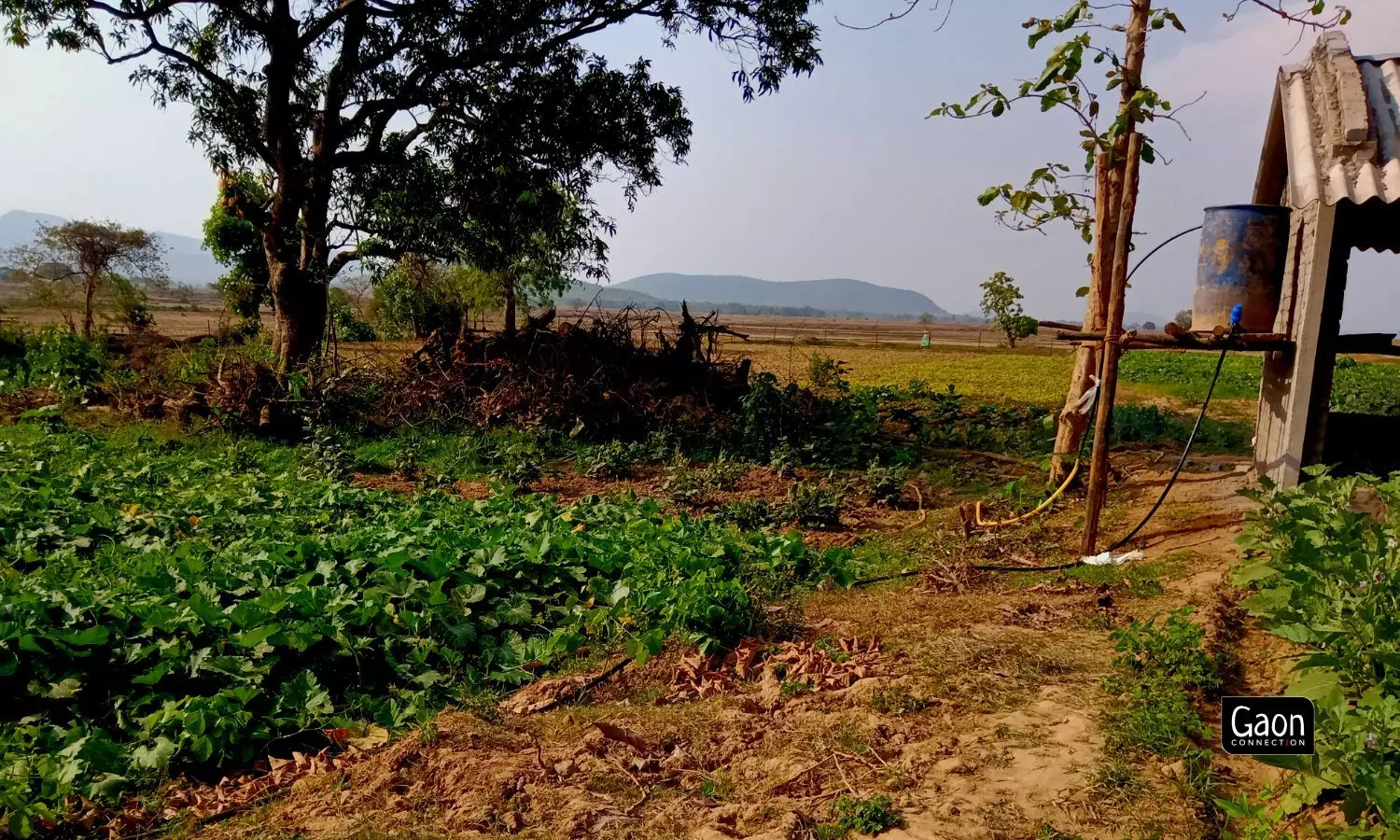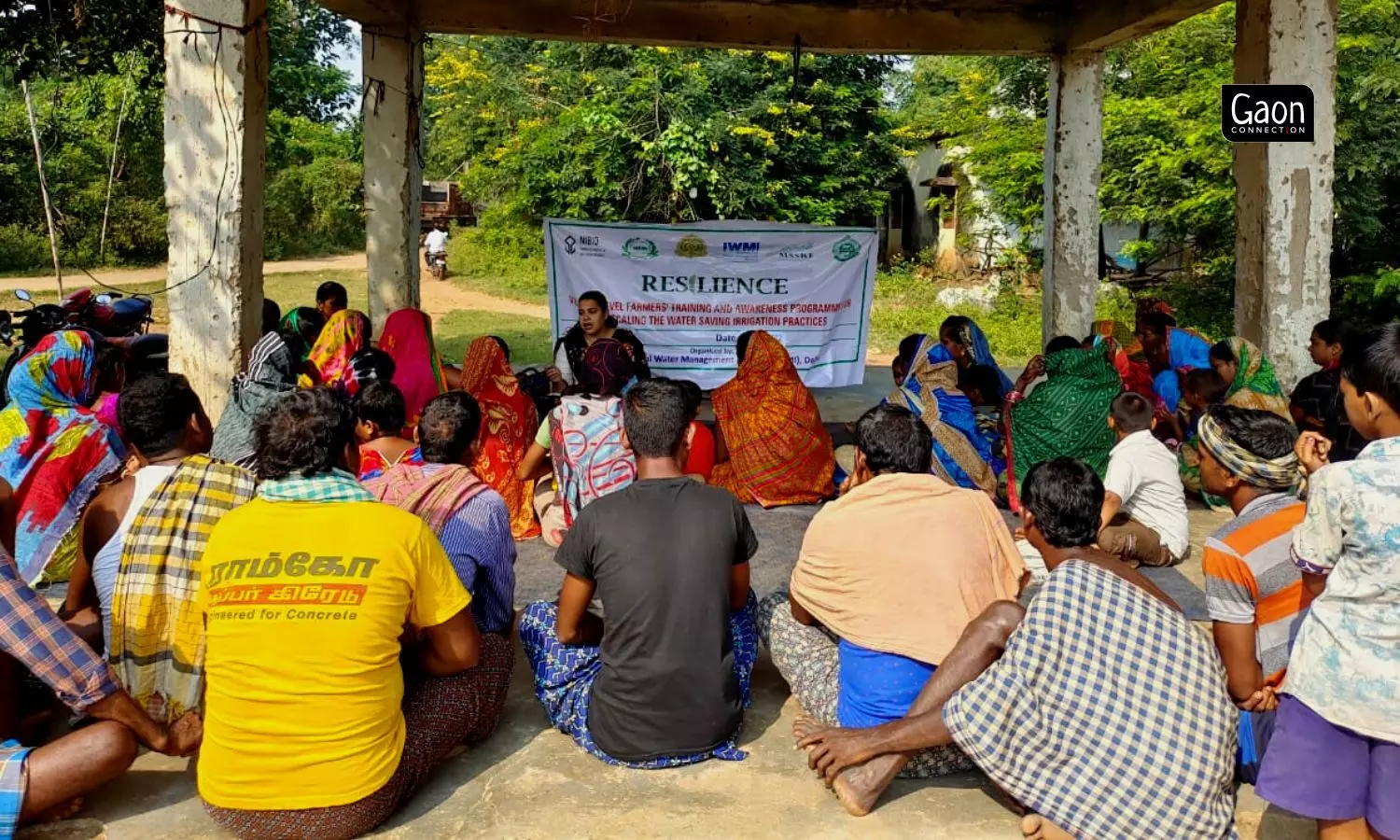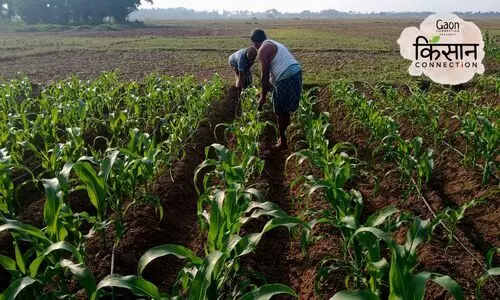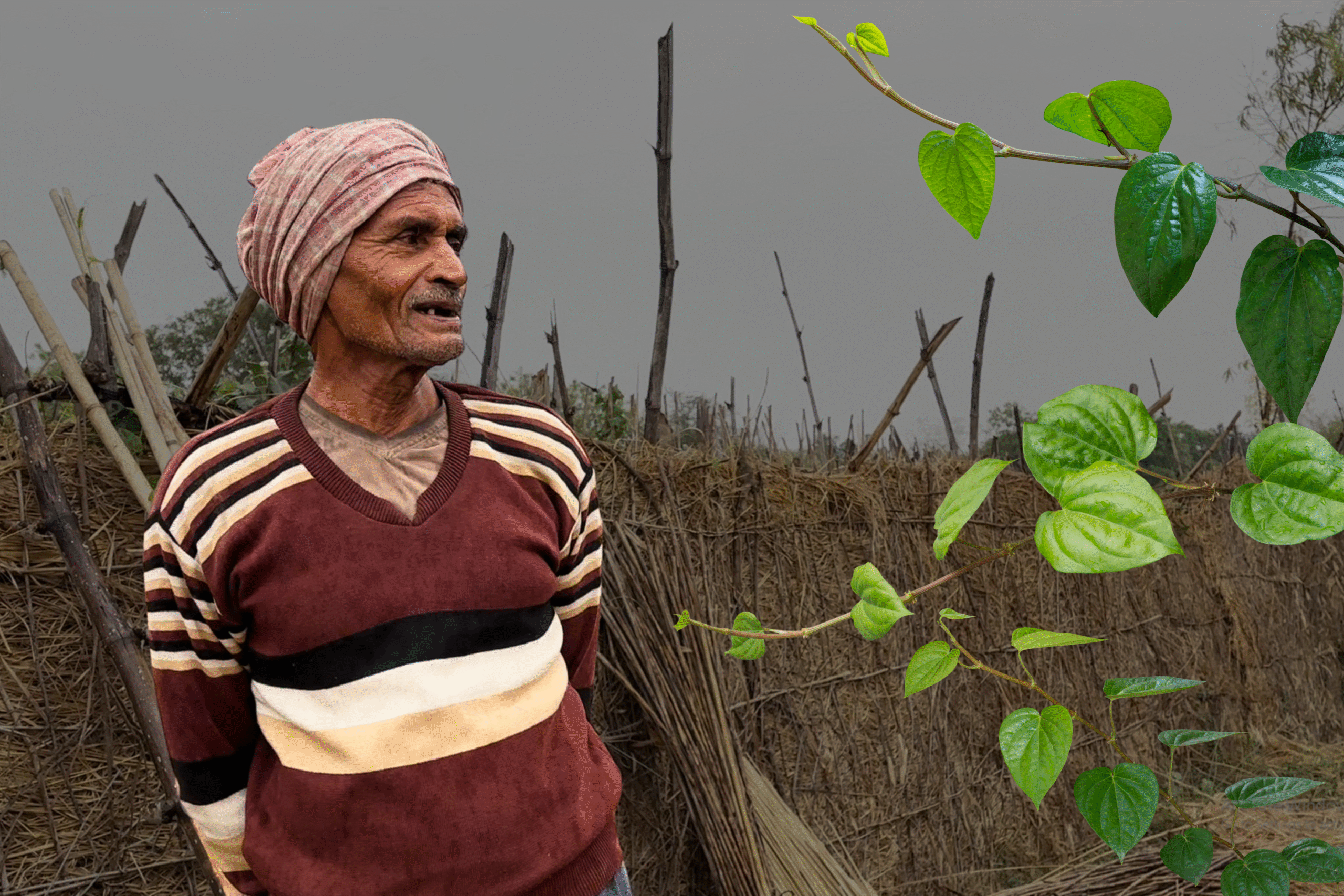While talking about his future plans to buy new tools for his land in the next cropping season, Jadumani Gogoi shared how he is now able to save some money ever since he started using the sprinkler technique of irrigation in 2021.
Twenty-seven-year-old Gogoi, a farmer from Chawdang Pothar village in Assam’s Golaghat is the fourth among his siblings who took up the farming job in his family. He owns 12 acres [about five hectares] of land on which he grows bananas, lemons and betel nuts.
Gogoi’s entire farmland is irrigated through a sprinkler system in which water is delivered to his fields through a network of pipes or hoses, which reduces water wastage.
“Earlier we had to wait for rainfall and were dependent on it but now since we adopted the sprinkler technique we get an adequate amount of water for the crops and water is also not wasted,” Gogoi told Gaon Connection.
“We fetch water from the pond near the house and then draw water from there to our field through the sprinkler system. Earlier when I used the diesel-operated pumpset to draw water from the canal then the cost on fuel would come to Rs 10,000 for one acre land and now after I used sprinklers, the cost has come down to half the earlier price. Now its cost is Rs 4,000-5,000 for one acre land,” he added.
Also Read: Farm Mechanisation Boosting Millets Cultivation By Women Farmers In Odisha
Gogoi is one of the several farmers in Assam’s Golaghat and Sivasagar districts who have benefitted from the adoption of micro irrigation systems, such as sprinklers and drip irrigation, provided under the ‘Resilience’ project.

The micro-irrigation systems are provided to the farmers under the Pradhan Mantri Krishi Sinchayee Yojana which is a welfare scheme funded by the Central government.
The project launched in 2018 and funded by Norway’s Ministry of Foreign Affairs aims to improve agricultural productivity, adaptive capacity and livelihoods of smallholder farmers to climate and economic changes, by building resilience and strengthening the agri-product market value chains. Due to climate change, rainfall patterns are changing and adoption of micro irrigation systems, which help grow crops using limited water resources, can help build climate resilience.
Apart from Assam, the project is also being implemented in Odisha. International Water Management Institute (IWMI) is one of the partners of the ‘Resilience’ project and is working closely with the state governments to install micro irrigation systems in Assam’s Golaghat and Sivasagar and Odisha’s Cuttack and Ganjam districts.
Separated by a distance of 1,800 kilometres from the farmer in Assam’s Golaghat, Surendra Sethi, a farmer from Odisha’s Ganjam district told Gaon Connection that he uses drip irrigation system for his two acres [almost an hectare] of land. The 52-year-old cultivates cowpea and kidney beans.
Also Read: Thirsty for more: Next to no rains in eastern UP, leave both paddy farms and cattle parched
Drip Irrigation is an efficient and economical way to water your land. Used commonly in drier areas of the country, drip irrigation is becoming more popular in the Northeast. Unlike other forms of irrigation, such as sprinklers that are only 65 per cent-75 per cent efficient, drip irrigation is 90 per cent efficient at allowing plants to use the water applied.

“Since we started using the drip irrigation system for our land nearly one fourth of the water has been saved. Earlier when we used a traditional system of irrigation, the cost of electricity was Rs 1,100- Rs 1,500 per year. However, after using the drip irrigation system, it has decreased to Rs 350- Rs 400,” said Sethi.
Susri Barnana Behera, a consultant at IWMI informed Gaon Connection that the installation of a drip irrigation system in an acre of land is around Rs 70,000, while it is around Rs 40,000 for an acre of land for installing sprinklers.
The micro-irrigation systems are provided to the farmers under the Pradhan Mantri Krishi Sinchayee Yojana which is a welfare scheme funded by the Central government and provides 60 per cent of the assistance in the ratio of 90:10 (Central:State) and the rest 40 per cent has to be contributed by the farmers. However, initially, during 2020-2022, the farmers’ share of investment for the installation of the micro-irrigation techniques was supported by IWMI.
But presently, with the frequent awareness and training programmes by IWMI, at least 35 more farmers in the two states have now applied for the scheme for availing the subsidies for the micro irrigation systems and are paying for the remaining 40 per cent for themselves.

For demonstration and raising awareness in the project districts, a total of six micro-irrigation systems have been installed in Assam while five micro-irrigation systems have been installed in Odisha.
In a policy brief titled Upscaling micro-irrigation in the Indian states of Odisha and Assam, April, 2023, published in April, 2023 by IWMI based on the project learnings mentioned, “The key limiting factors were identified as the lack of technical knowledge to operate and maintain MIS [micro irrigation system], financial capacity and low awareness about the benefits of MIS”.
Also Read: Ground Report: Livestock and livelihoods swept away in floods in Haryana
“To address these issues and increase adoption, the ‘Resilience’ project conducted field demonstrations of MIS among other water saving irrigation practices, and capacity building and training programs in four districts in Odisha (Cuttack and Ganjam) and Assam (Golaghat and Sivasagar),” it added.
The report mentioned that by adopting the water management practices like the micro irrigation system, farmers in Assam and Odisha can reduce agricultural risks and increase the production of crops.
However, the report highlighted that the adoption of micro irrigation systems has been low in both the states. As per the latest data shared by IWMI, the adoption in Odisha is 2.46 per cent and in Assam it is 0.72 per cent of the net sown area.
‘Low adoption of micro irrigation an issue’
Talking about the challenges faced in adopting the micro irrigation system, Smaranika Mahapatra, a researcher at IWMI said, “The challenges that the farmers had to initially face were that they were hesitant to adopt the technologies and the associated risks to crop yield as they were habituated with traditional irrigation practices”.
“Also, they did not have the knowledge on the technologies, benefits, and the schemes the government is providing. Another major challenge we faced while implementing is farmers were not agreeing to adopt because of their financial condition,” she added.
On measures taken to convince the farmers to adopt this new technique, Mahapatra said, “The first step we took is to convince the farmers through multiple field demonstrations, farmers field visits, and training sessions where we showed them micro irrigation is giving them three to four times profit, while saving them from labour charges and also reducing their electricity bill.”
Also Read: Here’s What Agriculture Ministry Told Rajya Sabha When MSP Was Demanded For Horticulture Crops
Further, she stated that the reasons for low adoption of micro irrigation systems are mainly lack of awareness and financial constraints of the farmers.
“Another constraint is that the majority of the farmers in India, particularly in eastern India are small farmers having smaller/fragmented plots or they are sharecroppers,” Mahapatra added.
Under the resilience project, for demonstration and raising awareness in the project districts, a total of six micro-irrigation systems have been installed in Assam while five micro-irrigation systems have been installed in Odisha.
Working closely with the state governments of Assam and Odisha, and project partners — Assam Agricultural University (Jorhat), Odisha University of Agriculture and Technology (Bhubaneshwar), National Rice Research Institute (Cuttack), M. S. Swaminathan Research Foundation (Chennai) — the IWMI has installed these micro irrigation systems.




















